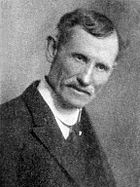
Mack Sennett was a Canadian-American producer, director, actor, and studio head who was known as the "King of Comedy" during his career.
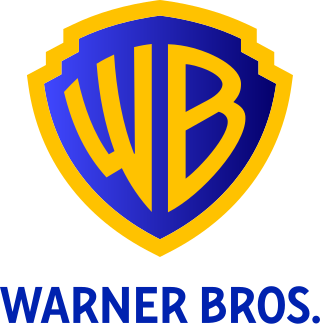
Warner Bros. Entertainment Inc. is an American film and entertainment studio headquartered at the Warner Bros. Studios complex in Burbank, California, and a subsidiary of Warner Bros. Discovery (WBD). Founded in 1923 by four brothers, Harry, Albert, Sam, and Jack Warner, the company established itself as a leader in the American film industry before diversifying into animation, television, and video games, and is one of the "Big Five" major American film studios, as well as a member of the Motion Picture Association (MPA).

The Jazz Singer is a 1927 American part-talkie musical drama film directed by Alan Crosland and produced by Warner Bros. Pictures. It is the first feature-length motion picture with both synchronized recorded music and lip-synchronous singing and speech. Its release heralded the commercial ascendance of sound films and effectively marked the end of the silent film era with the Vitaphone sound-on-disc system, featuring six songs performed by Al Jolson. Based on the 1925 play of the same title by Samson Raphaelson, the plot was adapted from his short story "The Day of Atonement".
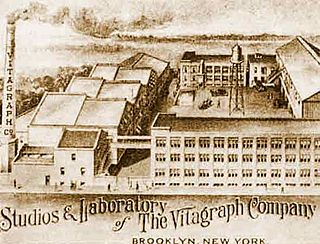
Vitagraph Studios, also known as the Vitagraph Company of America, was a United States motion picture studio. It was founded by J. Stuart Blackton and Albert E. Smith in 1897 in Brooklyn, New York, as the American Vitagraph Company. By 1907, it was the most prolific American film production company, producing many famous silent films. It was bought by Warner Bros. in 1925.

Major film studios are production and distribution companies that release a substantial number of films annually and consistently command the significant share of box office revenue in a given market. In the American and international markets, the major film studios, often known simply as the majors or the Big Five studios, are commonly regarded as the five diversified media conglomerates whose various film production and distribution subsidiaries collectively command approximately 80 to 85% of U.S. box office revenue. The term may also be applied more specifically to the primary motion picture business subsidiary of each respective conglomerate.

Vitaphone was a sound film system used for feature films and nearly 1,000 short subjects made by Warner Bros. and its sister studio First National from 1926 to 1931. Vitaphone is the last major analog sound-on-disc system and the only one that was widely used and commercially successful. The soundtrack is not printed on the film, but issued separately on phonograph records. The discs, recorded at 33+1⁄3 rpm and typically 16 inches (41 cm) in diameter, are played on a turntable physically coupled to the projector motor while the film is projected. Its frequency response is 4300 Hz. Many early talkies, such as The Jazz Singer (1927), used the Vitaphone system. The name "Vitaphone" derived from the Latin and Greek words, respectively, for "living" and "sound".
United States v. Paramount Pictures, Inc., 334 U.S. 131 (1948), was a landmark United States Supreme Court antitrust case that decided the fate of film studios owning their own theatres and holding exclusivity rights on which theatres would show their movies. It would also change the way Hollywood movies were produced, distributed, and exhibited. It also opened the door for more foreign and independent films to be shown in U.S. theaters. The Supreme Court affirmed the United States District Court for the Southern District of New York's ruling that the existing distribution scheme was in violation of United States antitrust law, which prohibits certain exclusive dealing arrangements.

The 1st Academy Awards ceremony, presented by the Academy of Motion Picture Arts and Sciences (AMPAS) and hosted by AMPAS president Douglas Fairbanks, honored the best films from 1 August 1927 to 31 July 1928 and took place on May 16, 1929, at a private dinner held at the Hollywood Roosevelt Hotel in Los Angeles, California. Tickets cost $5 ; 270 people attended the event, which lasted 15 minutes. It is the only Academy Awards ceremony not broadcast on either radio or television; a radio broadcast was introduced for the 2nd Academy Awards.
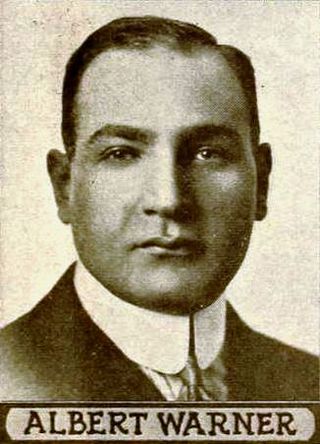
Abraham "Albert" Warner was an American film executive who was one of the founders of Warner Bros. He established the production studio with his brothers Harry, Sam, and Jack L. Warner. He served as the studio's treasurer until he sold his stock in 1956.

Associated Artists Productions, Inc. (a.a.p.) later known as United Artists Associated was an American distributor of theatrical feature films and short subjects for television. Associated Artists Productions was the copyright owner of the Popeye the Sailor shorts by Paramount Pictures, and the pre-1950 Warner Bros. Pictures film library, notably the pre-August 1948 color Looney Tunes and Merrie Melodies series of animated shorts, and the black-and-white Merrie Melodies shorts from Hugh Harman and Rudolf Ising, excluding Lady, Play Your Mandolin!.
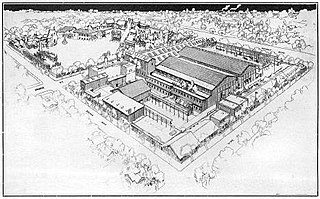
The Famous Players–Lasky Corporation was an American motion picture and distribution company formed on June 28, 1916, from the merger of Adolph Zukor's Famous Players Film Company—originally formed by Zukor as Famous Players in Famous Plays—and the Jesse L. Lasky Feature Play Company.

Convention City is a 1933 American pre-Code sex comedy film directed by Archie Mayo, and starring Joan Blondell, Guy Kibbee, Dick Powell, Mary Astor and Adolphe Menjou. The film was produced by Henry Blanke and First National Pictures and distributed by Warner Bros.

Film Booking Offices of America (FBO), registered as FBO Pictures Corp., was an American film studio of the silent era, a midsize producer and distributor of mostly low-budget films. The business began in 1918 as Robertson-Cole, an Anglo-American import-export company. Robertson-Cole began distributing films in the United States that December and opened a Los Angeles production facility in 1920. Late that year, R-C entered into a working relationship with East Coast financier Joseph P. Kennedy. A business reorganization in 1922 led to its assumption of the FBO name, first for all its distribution operations and ultimately for its own productions as well. Through Kennedy, the studio contracted with Western leading man Fred Thomson, who grew by 1925 into one of Hollywood's most popular stars. Thomson was just one of several silent screen cowboys with whom FBO became identified.
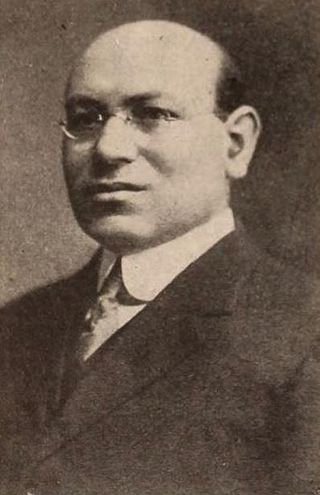
Nathan Harry Gordon was an American motion picture executive.

The Old Warner Brothers Studio, now known as the Sunset Bronson Studios, is a motion picture, radio and television production facility located on Sunset Boulevard in Hollywood, Los Angeles, California. The studio was the site where the first talking feature film, The Jazz Singer, was filmed in 1927.

The Better 'Ole is a 1926 American synchronized sound World War I comedy drama film. Released by Warner Bros. Pictures, Inc., this film is the second full-length film to utilize the Vitaphone sound-on-disc process, two months after the first Vitaphone feature Don Juan; with no audible dialogue, the film does have a synchronized musical score and sound effects. This film was also the second onscreen adaptation of the 1917 musical The Better 'Ole by Bruce Bairnsfather and Arthur Elliot. Charlie Chaplin's eldest brother Sydney Chaplin played the main lead as Old Bill in perhaps his best-known film today. This film is also believed by many to have the first spoken word of dialog, "coffee", although there are those who disagree. At one point during the film, Harold Goodwin's character whispers a word to Sydney Chaplin which is also faintly heard. This was discovered by the UCLA's Robert Gitt, during the restoration of the sound discs for the film. The line was recorded in perfect sync, apparently during the orchestra recording sessions rather than live on set, therefore making it the earliest known use of dubbing in a motion picture.

Edward Lloyd Hyman (1894-1984) was an early twentieth century theatre manager and innovator in the cinema industry.

Warner Bros. Pictures is an American film production and distribution company of the Warner Bros. Motion Picture Group division of Warner Bros. Entertainment. The studio is the flagship producer of live-action feature films within the Warner Bros. Motion Picture Group unit, and is based at the Warner Bros. Studios complex in Burbank, California. Animated films produced by Warner Bros. Pictures Animation are also released under the studio banner.

Ottalie Mark was an American musicologist, copyright consultant, composer, and music editor.

